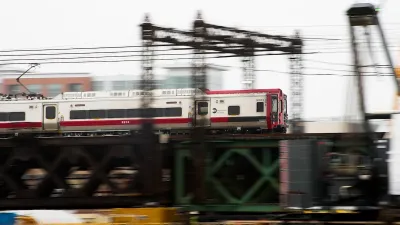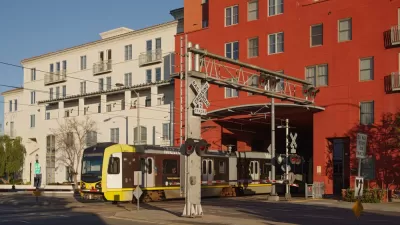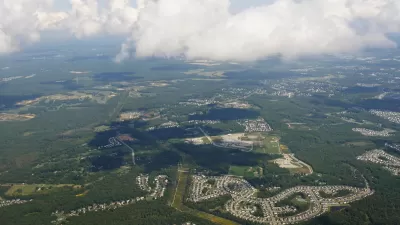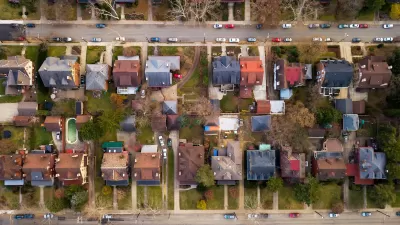The ‘Work, Live, Ride’ bill would prioritize funding for designated transit-oriented zones to encourage denser development near transit.

A bill that would encourage more transit-oriented development is back before the Connecticut State Assembly, reports Sam Hilton in Connecticut Mirror.
Dubbed Work, Live, Ride by the housing advocacy group DesegregateCT, this measure would prioritize communities with qualifying transit-oriented districts when doling out discretionary infrastructure funding or grants such as the Small Town Economic Assistance Program (STEAP) or the Urban Act Grant Program, both of which help municipalities invest in economic revitalization.
The law defines transit-oriented districts as “an area within a half-mile radius of a train or bus station that a city or town has designated for mixed-use and more dense development.” The zones would permit middle housing such as duplexes as well as higher-density multifamily housing.
Notably, this new version of the bill allows “transit-adjacent” communities without their own transit stations to create their own transit-oriented districts as well. The updated bill would create a public water and sewer rehabilitation or expansion account to assist communities with improving their infrastructure to accommodate new development.
Opponents say the law could force cities into zoning changes without community input. Hilton notes that the bill doesn’t force cities to create transit-oriented districts, but “specifies that a city must ask the secretary to designate such an area as qualifying for priority funding at a state level, and that areas that are already sufficiently dense can be grandfathered in at the town’s request, but don’t have to be.”
FULL STORY: ‘Work Live Ride’ is back on the legislature’s docket. Here’s what to know

Manufactured Crisis: Losing the Nation’s Largest Source of Unsubsidized Affordable Housing
Manufactured housing communities have long been an affordable housing option for millions of people living in the U.S., but that affordability is disappearing rapidly. How did we get here?

Americans May Be Stuck — But Why?
Americans are moving a lot less than they once did, and that is a problem. While Yoni Applebaum, in his highly-publicized article Stuck, gets the reasons badly wrong, it's still important to ask: why are we moving so much less than before?

Research Shows More Roads = More Driving
A national study shows, once again, that increasing road supply induces additional vehicle travel, particularly over the long run.

Judge Halts Enforcement of Anti-Homeless Laws in Grants Pass
The Oregon city will be barred from enforcing two ordinances that prosecute unhoused residents until it increases capacity and accessibility at designated camping sites.

Advancing Sustainability in Los Angeles County Schools
The Los Angeles County Office of Education’s Green Schools Symposium brings together educators, students, and experts to advance sustainability in schools through innovative design, climate resilience strategies, and collaborative learning.

Using Old Oil and Gas Wells for Green Energy Storage
Penn State researchers have found that repurposing abandoned oil and gas wells for geothermal-assisted compressed-air energy storage can boost efficiency, reduce environmental risks, and support clean energy and job transitions.
Urban Design for Planners 1: Software Tools
This six-course series explores essential urban design concepts using open source software and equips planners with the tools they need to participate fully in the urban design process.
Planning for Universal Design
Learn the tools for implementing Universal Design in planning regulations.
City of Moreno Valley
Institute for Housing and Urban Development Studies (IHS)
City of Grandview
Harvard GSD Executive Education
NYU Wagner Graduate School of Public Service
City of Cambridge, Maryland
Newport County Development Council: Connect Greater Newport





























